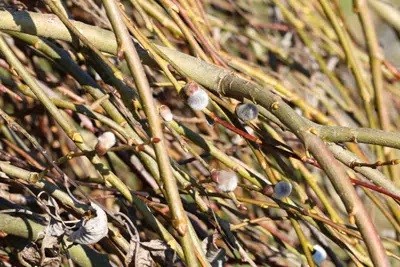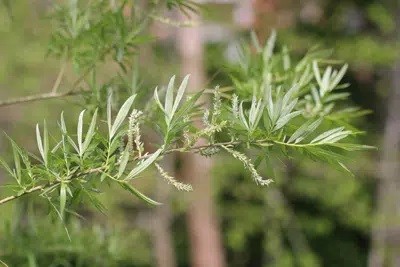The family of willows has the botanical name Salix, now there are many different varieties. These magnificent woody plants can be used individually in the garden and easily propagated on their own. Willow cuttings form new roots within a short time, after planting these trees also quickly sprout again. To promote root formation, the cuttings should stand in a water container for some time after pruning.
Multiply
Willows are pioneer plants and have few demands on the environment, substrate and site conditions. Propagation is vegetative, that is, asexual, no other willow tree is needed for this. Even longer shoots root quickly and can be successfully planted.
- Propagation from sections of the mother plant possible
- Stock cuttings are possible
- Alternatively, branches and cuttings can also be used
- Cut back woody plants after flowering to promote branching
Cut cuttings
To propagate willow, you must first cut one or more branches from an existing tree. Here, the length of the willow branches needed depends on the desired use of the cuttings. New and completely intact woody plants can be grown from most willow branches. However, the cut branch should already have formed a bark. When cutting, be sure to use only very sharp gardening tools so as not to crush the plant’s conducting lines. With blunt pruning shears quickly cause injury, from which the woody plant will only suffer unnecessarily.
- Cut cuttings from June to July
- Select woody branch, this should no longer be green
- Always cut diagonally from the mother plant
- When cutting the branches use a sharp knife
- Disinfect the cutting tools sufficiently beforehand.
- For hedge cuttings with 20-30 cm length are sufficient
- For high trunk produce cuttings of 50-80 cm
Rooting
For quick and successful rooting, it is advisable to place the cut willow branches in water before planting. There, at the latest after two to three weeks, the cuttings can form several fine and white water roots. With this method, the process and its development can be easily followed. Alternatively, the cut willow branches can be planted as cuttings in the desired place in the garden immediately after cutting. However, it is important to ensure that the soil is always kept moist enough to guarantee successful root development.
- Place cut branches in container with water.
- Cut surface must face downward
- Replace water every few days
- In the foreseeable future, small roots will begin to grow
- When root size is sufficient, willow cuttings are ready for planting
- Alternatively, freshly cut branches can be planted individually
- A semi-shaded location is ideal
- Water sufficiently in dry weather
- However, avoid waterlogging at all costs, as this can lead to root rot.
Tip: If the cross-section of the cut surface is enlarged by a diagonal cut, then the water absorption capacity of the respective willow branch is increased
Plant cuttings

Willows are low-maintenance pioneer shrubs that are relatively robust. These are undemanding to the planting substrate, but always need an adequate supply of water. The woody plants form strong and well-branched root systems, so they are excellent for hedge fencing and for fortifying slopes. In addition, the strongly branched roots can also strengthen the soil as bank planting. In this way, garden ponds and rivers can be fortified in the home garden.
- Thoroughly loosen the soil before planting
- Enrich with some humus-rich plant soil beforehand
- Place willow cuttings directly into the soil
- Always provide sufficient moisture
- New shoots will form after a few weeks
Tip: When planting unrooted cuttings, it is essential to ensure that they are not planted the wrong way round. It must always be the lower end in the ground, otherwise no roots can form
Varieties

Due to the high growth rate of willows, propagation with cuttings can be carried out with most varieties. However, the space available in your own garden should always be taken into account, as some varieties can grow into trees with a height of up to 30 meters. However, most representatives of this genus remain relatively small, with a manageable growth. The preferred locations of these attractive woody plants include floodplain forests, bog landscapes and river or stream courses. Therefore, willows also depend on adequate moisture in the soil in the home garden.
- Silver willow, botanically: Salix alba
- Sal willow, botanically: Salix caprea
- Wicker or hemp willow, botanical name: Salix viminalis
- Harlequin willow, botanical: Salix integra ‘Hakuro Nishiki’, originating from Asia
Conclusion
Willows are hardy woody plants that can be propagated without a great deal of effort. All that is needed are willow cuttings, which will form roots after only a short time. These can either be grown in water beforehand or planted in the ground for good. Thanks to the wide range of applications, the fast-growing plants can serve many purposes in the garden.


